Oru Coast XT Folding Kayak (Review)
Richard Rathe August 2025 (How_To, Reviews, Technology)
Oru kayaks started out small. The first one I saw in a sporting goods store several years ago looked like a toy. Since then they have developed several larger, more serious designs. Here is a summary of my experience with the Coast XT, their longest and most ambitious model—a 16ft sea kayak that weighs in at 32 pounds.
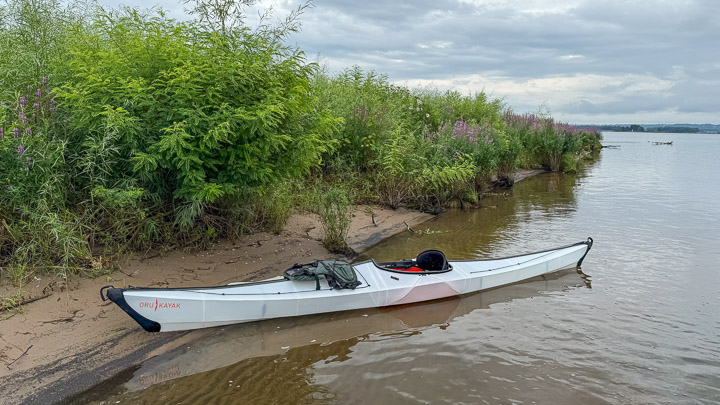
There are two big innovations that make these kayaks possible: super-strong corrugated plastic and a clever origami design. To start with, the basic storage box
uses the orange cockpit floor as a lid. The only extra parts needed are the carry straps.
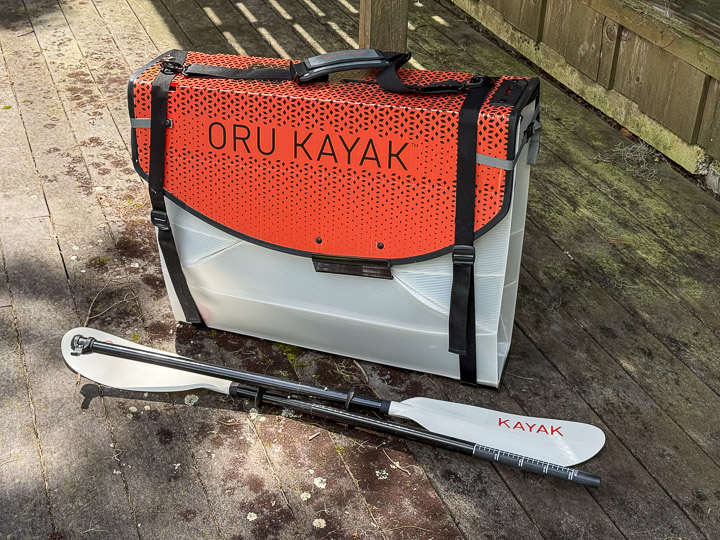
After removing the straps and releasing three buckles the hull unfolds into a huge elongated bowl.
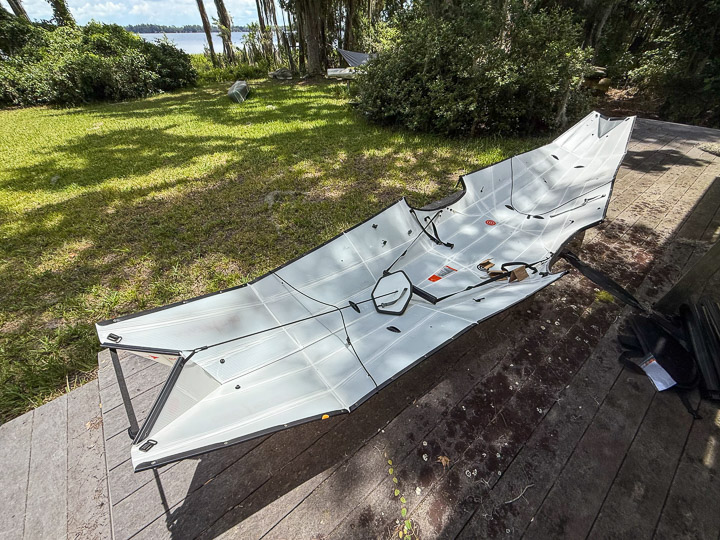
The orange floor snaps into the side coaming. Note the two aft bulkheads.
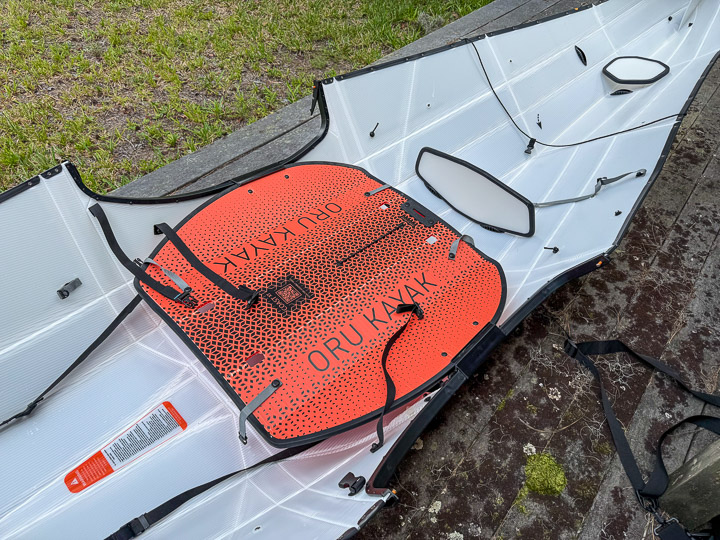
The bow and stern are formed by clever inward folds. This means there are no seams to leak. Also note the forward bulkhead strung on a shockcord supporting the footrest.
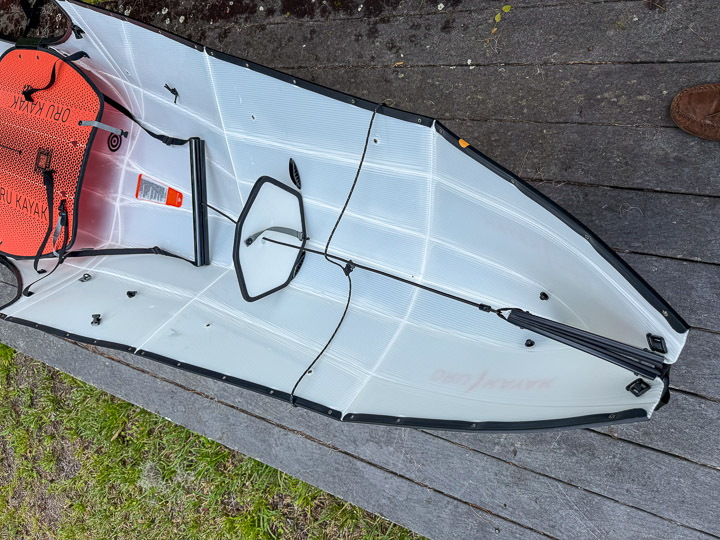
From this point assembly goes quickly with a strap and latch to pull the forward coaming together, followed by insertion of the seatpost which closes the aft coaming. Six stiff plastic zippers
close the decks. Finally the ends are closed with elastic covers and the decklines are clipped in.
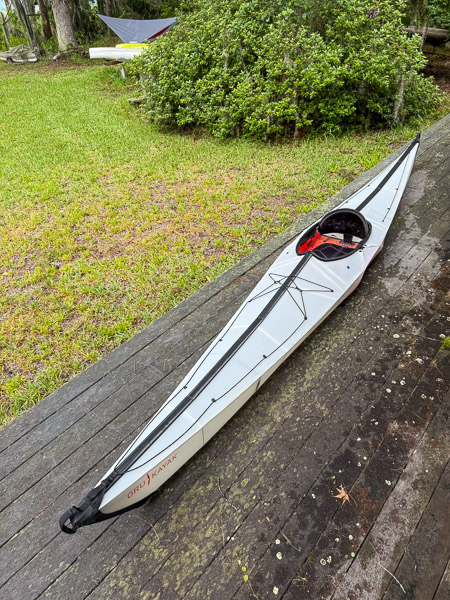
Floatation & Stowage
Oru sells a set of one-size-fits-all inflatable floatation bags. You place these just before zipping up the decks. Small hoses protrude from the ends to allow inflation before the covers are applied. As is obvious in the first photo below, the bags are wider than the boat and fill the space without being fully inflated (more on this below).
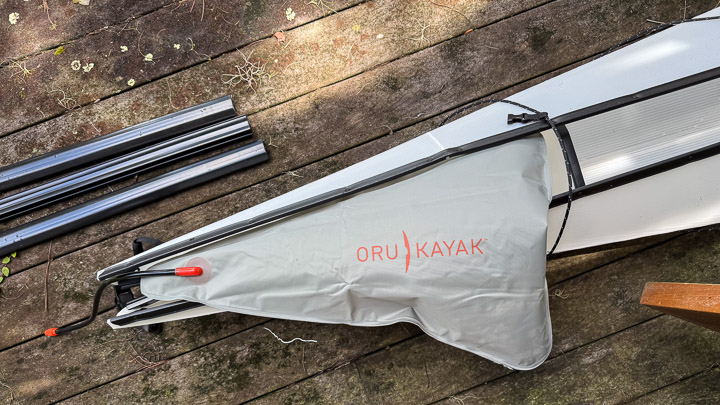
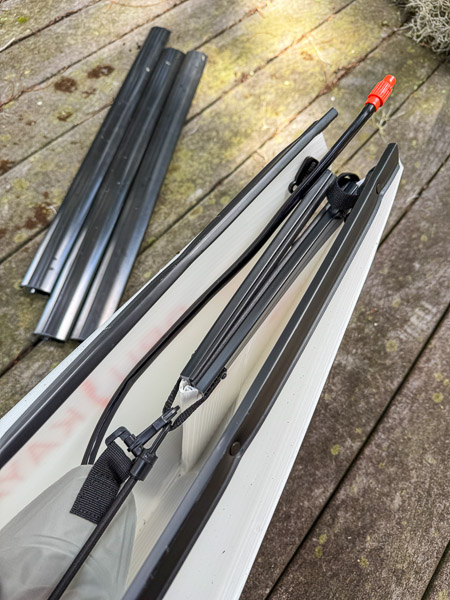
Note that the bow zipper end is longer than the hull material. This makes it difficult to close the elastic cover. I'm not sure if this is a design or manufacturing issue, but I intend to grind one zipper down so that it does not protrude in this way.
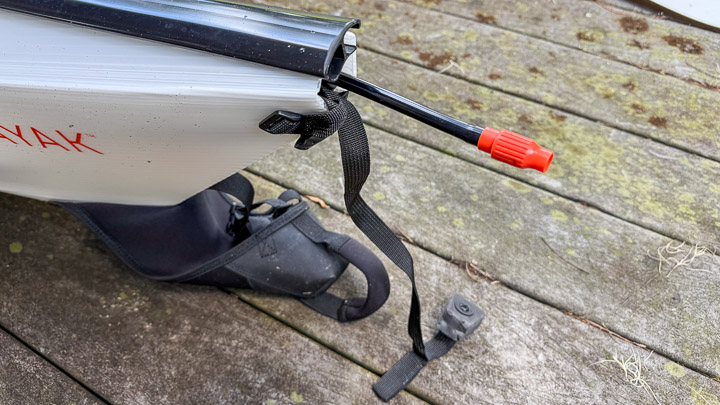
One advantage to the zippered deck design is it is very easy to access the stowage areas fore and aft. This photo shows a 55 liter dry bag in the aft compartment. There is an additional small stowage area behind the seat. The bow has room for a 20 liter bag. Note that these bags cannot but stuffed full if they are going to fit. I think I will likely use two 20 liter bags aft instead of the 55.
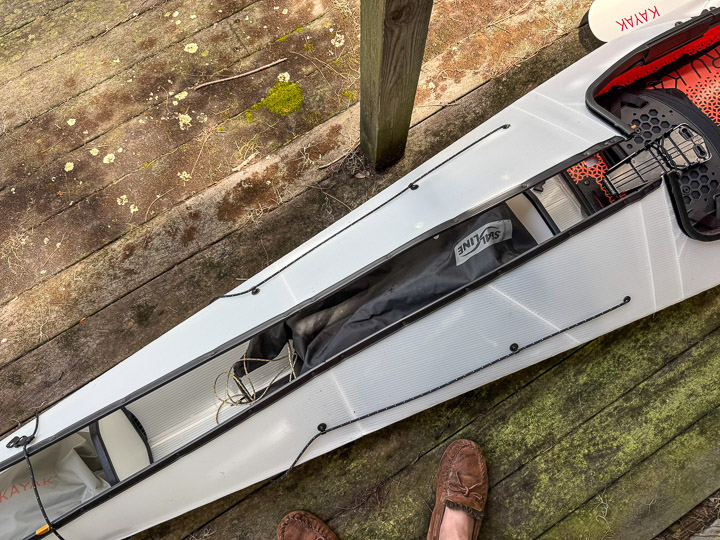
Mods
I bought a good deck bag to use with this boat. However, I was not happy with the options for attaching it, so I added two short bits of webbing to an existing fitting. Addressing another issue I included a short velcro strap on the right as a paddle rest.
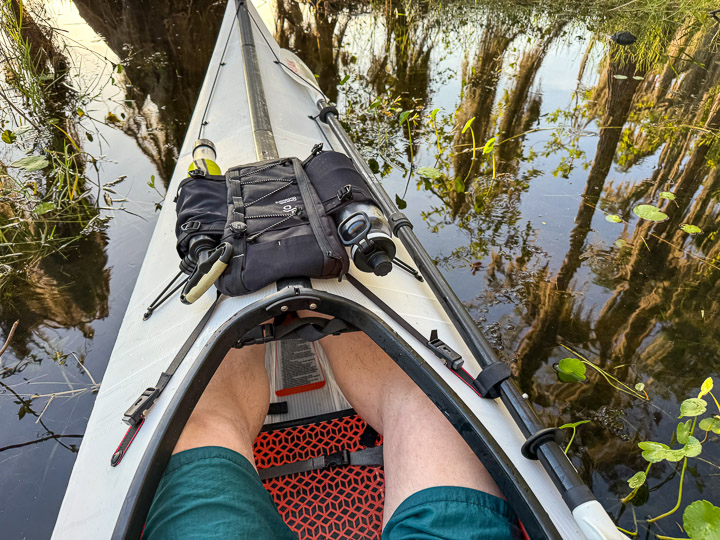
To accomodate the special clips on the bag, I enclosed a short piece of rope in the end of each strap.
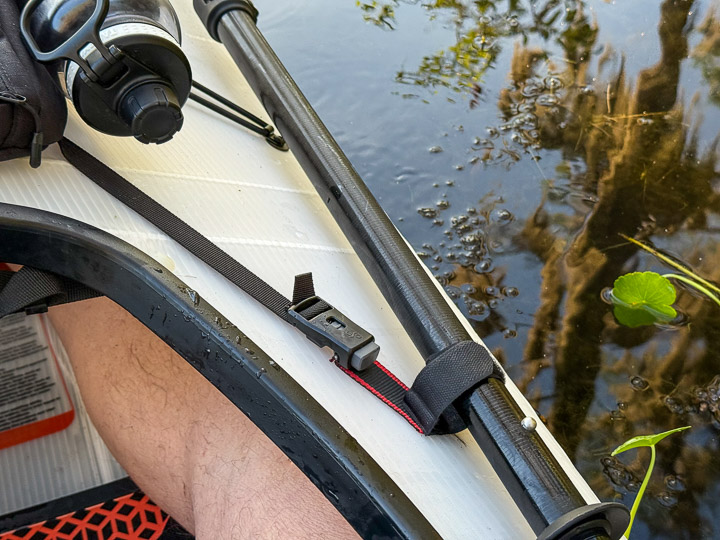
I originally planned to rest the paddle in the forward decklines as shown above. However, this caused twisting of the small eyelet attaching the line to the boat. A short loop of shockcord solved this problem and made removing the paddle much easier.
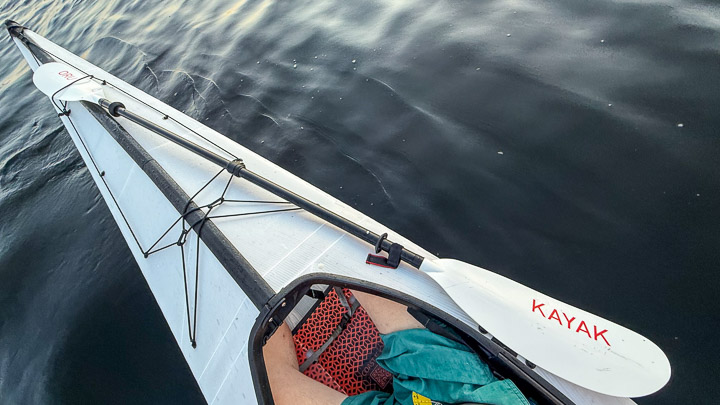
For reasons I mostly don't understand, sea kayaks apparently never use paddle rests. They also tend to position deck bags so far forward that they are inaccessible from the normal sitting position. I think this is mostly a safety concern. The pros who go into whitewater or cross open ocean want to keep their decks clear in case they need to self-rescue (see below).
Minor Problem
Now that I'm familiar with this boat I've noticed that it tends to pull to the left. In the photo below you can clearly see the increased wake on the left side.
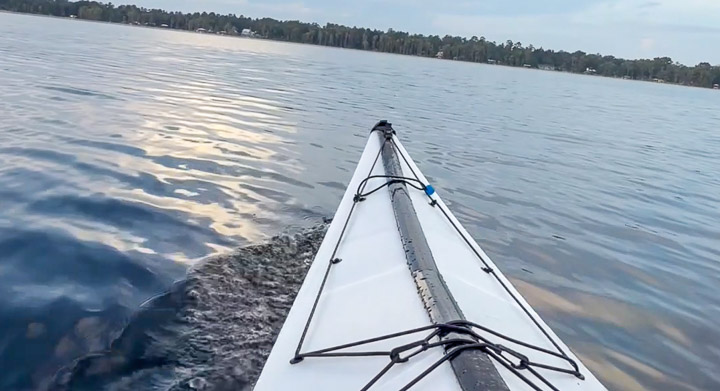
It turns out the bow cover on that side does not lay flat as it should. This may be related to the excess tension required to cover the protruding zipper mentioned above. Or it may just be a slight variation in manufacturing. I've been in contact with Oru to resolve the issue.
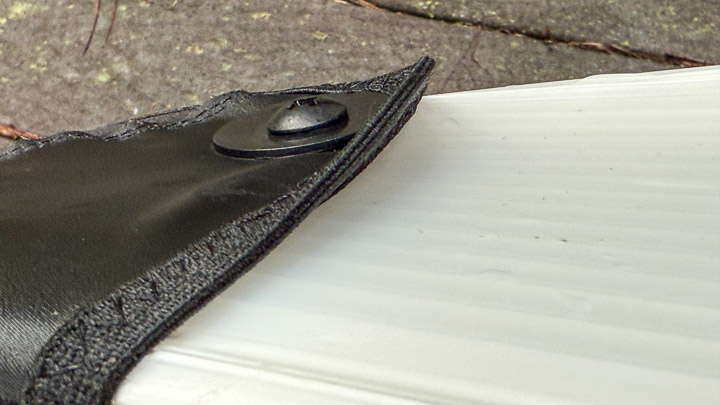
Safety Issues
In anticipation of an island-hopping trip on Lake Superior I purchased a nylon spray skirt from Oru. This prevents taller waves from coming directly into the cockpit, which is fine as far as it goes.
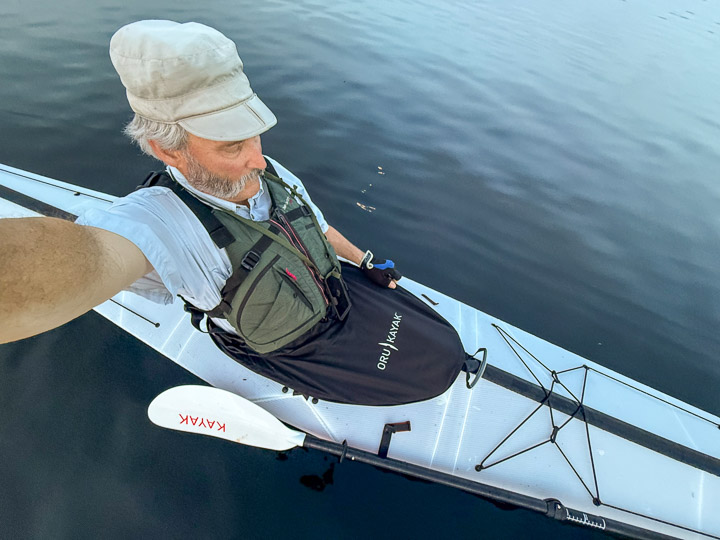
Once I arrived in northern Wisconsin my partner and I signed up for a kayak safety course. We both have lots of experience with sit-on-top Hobie kayaks, but very little with ocean-style boats.
What I discovered was this: The Oru Coast has the form of a sea kayak, but not all of the function. Specifically, I think it is very unlikely even an experienced kayaker could self-rescue in deep water. The reason is two-fold: 1) The flotation as described above is enough to keep the boat afloat, but it does not keep the decks above water; and 2) the deck zippers are good enough to keep out splashes, but they are not watertight!
What this means in practical terms is none of the standard paddle float self-rescue techniques will work. I struggled under the instructor's eye to get back in. As soon as I had most of my weight on top of the boat—one or both decks went under. I was technically back in
the kayak, but it sank beneath me.
It is possible that a two person T
rescue could work, but we did not attempt it because we ran out of time. It is also possible that a very adept kayaker could quickly do the Eskimo Roll
maneuver before the boat was flooded. But my conclusion is:
This kayak is only safe within swimming distance of shore or other boats.
Conclusion
With the caveat above, I can say I'm very happy with this kayak. It fits in my car, is easy to assemble, the design is solid, and it's fun to paddle. 🙂